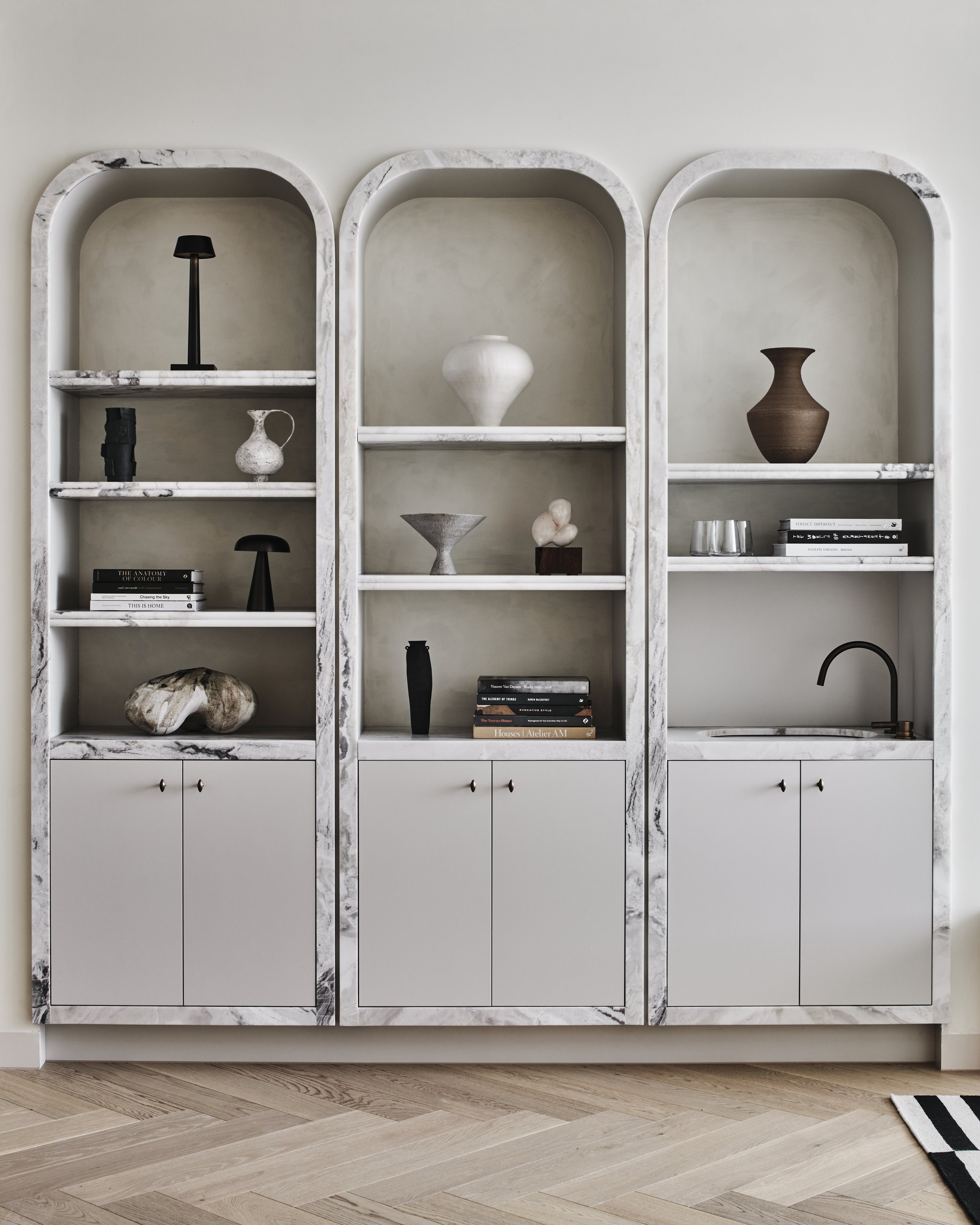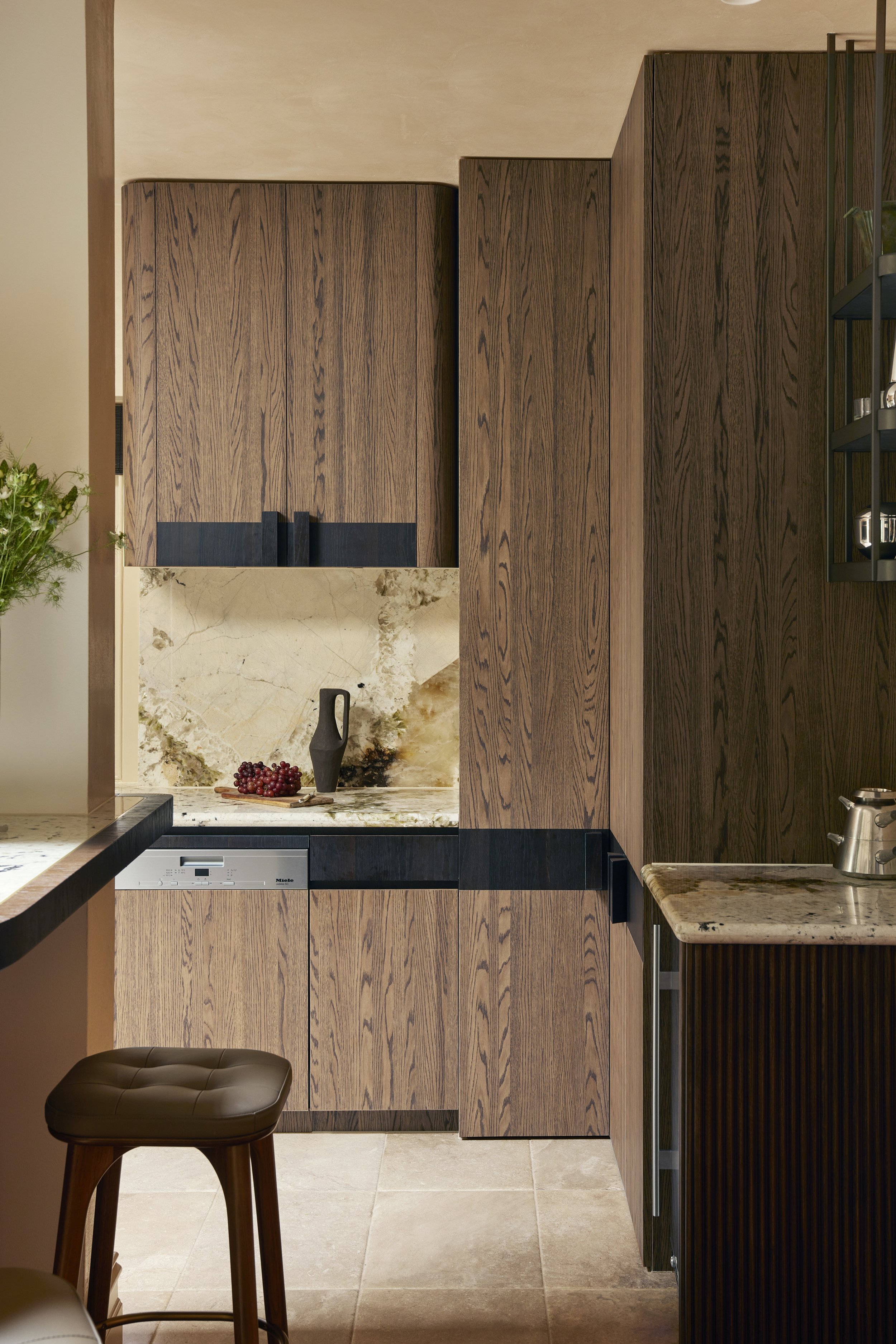Anouska Milstein from A.mi
Anouska Milstein is the creative director and founder of A.mi—here she shares her career trajectory, her passion for interiors, and why the most important element in a space is its ability to ignite a feeling.
Photography: Tom Blachford, Sean Fennessy & Pier Carthew
Oryx Dental by A.mi. Photo: Tom Blachford
Hello Anouska—take us back to the beginning of your work journey…
Anouska: Prior to starting my own business I completed degrees in both psychology and interior design. I then went on to work at a couple of small architecture practices, working in very small teams and learning as much as I possibly could. I was incredibly fortunate to work under one director who taught me how to be fastidious in organisation and detail, and then another who was a generous mentor and brought amazing insight into how to approach spatial planning in a way that wasn’t dictated by traditional patriarchal practice.
I formally started Studio A.mi in April 2020. I’d been freelancing part-time for a couple of years alongside days at a practice, however my role became redundant in March due to COVID hitting and projects being cut. Having my hand forced turned out to be the best thing that possibly could have happened, because it takes a lot of nerve to take the plunge and go solo! A week later I got the call for my first private commercial job.
Do you have any creative rituals or routines that you follow when starting a new project?
Our studio’s process to start our projects has been consistent yet ever evolving, which is so important now as our name is starting to get out there and we need to be able to clearly articulate what sets us apart.
There is always a good gasbag between myself and my amazing sole colleague Elle Ross, where we go through site photos, plans, client briefing together and just spitball ideas... anything from a memory of a place, to film references, to something seen in an old book, to a particular feeling something gives us.
What does it mean to be an interior designer in the current Australian interiors and design landscape?
We are very fortunate to live on the land that belongs to the world’s oldest living Indigenous Peoples, with an ancient history of built forms. Then we have a (relatively) new colonial settler history, with its imported architecture and rapid development that basically ignored the climate, resulting in our famed attractive, yet freezing and dark homes. In the mid century we had a pretty remarkable modernist movement where names like Boyd and Featherston shaped our interiors in a uniquely Australian way. Then we had many ensuing decades of government promoted heavy multi-cultural immigration, further expansion of our cities, with influences from foreign investors, developers and designers.
I see that all people of this country are unified in their sense of movement. Because of this, I feel that our interiors lack a certain stagnation that I see in other countries that have protracted histories of permanent built environments. For many decades non-Indigenous Australians were trying to facsimile British and American architecture and culture onto Australia, but as we all know, replica is never as good (ha) and so ‘Australian Design’ started to become a thing of its own.
In 2024 we are bright eyed and bushy-tailed, still absorbing inspiration from everywhere—particularly as avid travellers. There has always been so much experimentation here, and that’s because there are not the same defined ‘rules’ of design or rigidity as in other countries, there’s no real wrong or right, so we just go for it! So many designers here are of multicultural lineage, and combining that with our cities being such cultural melting-pots, our design world is spectacular. With our deep connection to the great outdoors, our interiors tend to be mindfully light-filled and even at their most opulent, retain a sense of casual. There’s now a unique Australian vernacular that’s emerged, and I see it’s because of all that we are.
The most rewarding part of your job is...
When clients tell me how much they feel the final outcome deeply understands them.
And the most challenging aspect of your job is...
Dealing with rising building costs. A lot of what is published broadly in the interiors space deals with very high budgets. Unfortunately, it’s just not realistic for most Australians. We always try our best to deliver excellent design within our client’s stipulated budgets, and have clear conversations throughout our design process about choices relating to cost, with fallback options if budget doesn’t permit certain details. I don’t want us to ever be known for overpromising and under-delivering.
When did design first have an impact on you?
I wish I had a pivotal singular moment, but my answer is simply—it was just always around me. I come from a multi-cultural background, and my grandparents each in their own way were interested in good design and believed in spending on good quality, long-lasting things.
My paternal grandparents began a successful knitwear company called Merinda - ‘Beautiful’ in Gadigal language. They engaged an architect to design a modernist home for them in the early ‘60s. They loved bright and light interiors, European and locally produced furniture.
My maternal grandparents were a doctor and scientist respectively. They had an architect design their retirement home from where they ran a cattle farm in 80s. The farmhouse has a straw thatched ceiling, red tiled flooring, and exposed bricks walls. They had a large collection of Australian modernist furniture, pieces from a period of living in Indonesia, as well as pieces of furniture and pottery made by my great-grandfather who moved to Australia from Jamaica to work at the CSIRO, but who was a passionate maker.
My parents moved to Italy in the early 80s, and lived in Milan. Both my brother Ilya and I were born there but they moved back to Australia when we were young. All these homes I was exposed to were filled with so much life—adorned in books, photos, souvenirs, found objects, collected objects... they visually told amazingly rich stories of their occupants, and so the knowledge that interiors had the ability to tell stories was always there for me.
“Occupying a space and feeling all five senses engage with it is unparalleled. I realised that is why I love interior design—how it can change the way you feel.”
Where do you mainly go for inspiration?
When I’m feeling completely devoid of inspiration, I get out and about and look! Just being present and mindful walking down the street and really looking can give you a totally fresh perspective.
I had a real ‘aha’ moment in November last year when I was feeling very emotionally disconnected from interior design for maybe the first time ever—I felt lost in what mattered to me about it, unsure about my pathway.
I was fortunate enough to capitalise off some soon-to-expire flight credit and take an impromptu twelve day trip to Sri Lanka for a surf trip slash Geoffrey Bawa pilgrimage.
The way I felt in Bawa’s, Lunuganga (Salt River) home, made me realise what I had been doing wrong—consuming inspiration solely through images. You can be wowed, but you can’t truly feel a space through imagery. There’s typically very clever editing to make it feel moody or sexy or solemn, but actually occupying a space and feeling all five senses engage with it is unparalleled. I realised that is why I love interior design—how it can change the way you feel.
There’s also a hell of a lot to be said about just being in nature for inspiration. The ocean has always been a deeply healing place for me, and spending ten days of that trip connecting to the incredible energetic force of the ocean’s waves brought so much space for clear thinking, catharsis, and then inspiration through creative, expansive thinking.
I think a serious lack of realisation about creativity by younger generations is how much the brain just needs to be given space... that’s why big ideas often come in the shower, on a run or walk, or when you’re trying to fall asleep! It’s not going to get that space for ideas if you’re always looking at a screen.
What do you love most about your job?
That every single day I get to be creative, and that every single day I learn something new.
Three words that sum up your design approach?
Thinking. Feeling. Transportive.
The most valuable piece of advice you would give to emerging interior designers looking to break into the industry is...
Find your point of difference. I know that’s easier said than done, but as social media increasingly perpetuates trends, and software makes documenting more homogenised, it’s important to show a business what you bring that’s unique. Don’t try to force something, or copy something you’ve seen that you feel is interesting. It’s about passion and you will thrive if you follow that. Something in your life’s story has brought you to this point.
I also highly recommend that if you contact a firm for work—at a minimum learn the director’s names, and reference at least one of their projects!
What’s the first design element you always notice when you walk into a room?
Honestly - unless I’m really focused on looking, I often will be too distracted by conversation, service, food, music, etc to pay good enough attention. What I do notice is whether I feel comfortable or not. The flow of movement through a space that a good floor plan brings can mean a lot. Bad proportions of things can throw things off. There’s no point in having gorgeous chairs to your dining table if they’re the wrong height for one another. The way a space is illuminated is irrefutably one of the most important elements of how a space feels. Switch those downlights off - IMMEDIATELY!
Are there any dream projects or collaborations you aspire to undertake?
I’d love to collaborate with some of the amazing Naarm/Melbourne architects I really admire. There’s only so far an interior designer can go in transforming a space before the rule book is thrown, and when light and aspect is so important to a space it would be wonderful to be able to explore this too.
What are you most excited about that’s coming up for Studio A.mi?
Getting our name and work out there to a wider audience! I’m so grateful to Hunter & Folk for reaching out to share some of our story and our work. We have so many amazing projects completed and so many more to come, I’m really excited to see how it’s all received.















